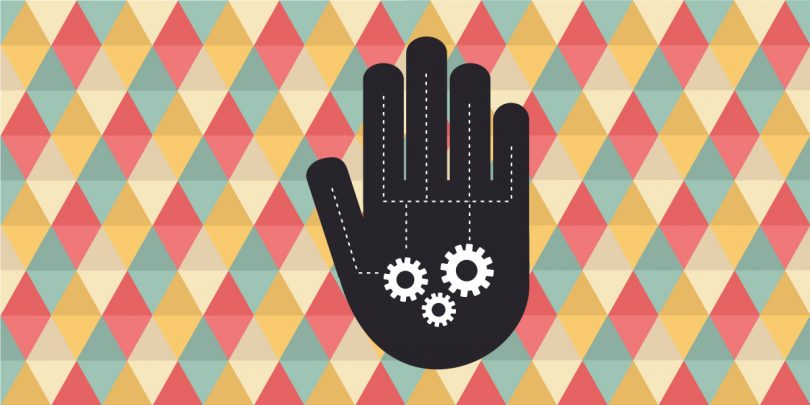Written by Carl B. Weiss, M.D.
Many people have heard of common conditions that affect the hands. They may even know the symptoms and what treatments exist. But very few people understand what is happening internally. Here is a close look at some common hand problems—their causes, symptoms and solutions.
Carpal Tunnel Syndrome
Carpal tunnel syndrome (CTS) is often attributed to overuse of the hands or wrist, although this has never been conclusively proven for repetitive tasks such as typing. A vibration injury, such as operating a jackhammer, has been shown to predispose an individual to the development of CTS. Diabetes, hypothyroidism and pregnancy are also associated with CTS.
The symptoms of CTS are tingling, numbness and burning in the thumb, index finger, long finger and one-half of the ring finger. An individual may have any combination of these symptoms in any or all of the fingers listed. The burning sensation may occasionally run up to the elbow or shoulder. As the condition progresses, there is a tendency to drop small objects and difficulty performing daily activities, such as buttoning a shirt.
What causes these uncomfortable symptoms, which often keep people awake at night?
CTS refers to the compression of the median nerve as it passes through a tunnel from your forearm to your hand. This compression can be caused by anything that prompts the contents of the tunnel to become larger, such as swelling or water retention associated with pregnancy. The nerve is the softest structure in the carpal canal, so it is compressed the most if any other structure swells.
The median nerve supplies sensation to the above mentioned fingers, as well as controls some of the small muscles that move the thumb. Individuals with severe and longstanding CTS can sustain irreversible damage to the nerve, and therefore may permanently lose function of these structures.
Treatment options for CTS include night splinting, stretching exercises, corticosteroids (taken orally or by injection directly into the carpal tunnel) and surgical release of the transverse carpal ligament that forms the roof of the tunnel.
DeQuervain’s Tendonitis
Another painful common condition found in the wrist is deQuervain’s tendonitis. This is caused by inflammation of the tendon located in a tight compartment on the thumb side of the wrist. deQuervain’s tendonitis is commonly found in new mothers who are repeatedly picking up their newborn and placing stress on this area. The pain can be excruciating and severely limit the use of the hand.
Treatment options include splinting and oral anti-inflammatory agents. The quickest method to alleviate pain and return to function is often injecting the painful compartment with cortisone. If up to three injections fail to provide lasting relief, surgical release of the affected compartments will provide the tendons space to function without pain.
Trigger Finger
Another condition is trigger finger, a tendon problem that is often described by patients as their finger or fingers being stuck in a bent position and snapping when they are straightened out.
Tendons are the rope-like structures that connect muscle to bone. Many of the muscles that move your fingers are located in the forearm, and are connected to your fingers by tendons. Trigger finger occurs when the a tendon has trouble fitting through the tight sheath that holds it to the bone near the base of the finger in the palm. Symptoms tend to be worse in the morning. No one really knows why trigger finger develops in certain individuals or why in one finger and not another. However, as with CTS, conditions such as diabetes and thyroid disease increase your likelihood of developing one or more trigger fingers.
Treatment consists of cortisone injections, which have proven to work well in the majority of patients. However, patients with diabetes tend to not respond as well to injections as other patients. For those who do not respond to nonsurgical treatment, surgery is an option. Surgical treatment consists of dividing the tight pulley involved, which you do not need if all of the other pulleys are intact. This procedure allows the tendon to move freely without catching.
Basal Joint arthritis
Patients often complain of sharp pain at the base of their thumb that is aggravated by activities such as opening a jar, or by pinching motions such as turning a key in a lock. These symptoms usually point to basal joint arthritis, the wearing out of the smooth articular cartilage at the base of the thumb metacarpal. This condition often affects women in their 50s, but is not unusual in younger patients and men. The cause, as seen with osteoarthritis in most areas of the body, is multifactorial. Genetics almost certainly play a large role. Injury to the thumb can also cause or aggravate this problem.
A diagnosis of basal joint arthritis is made by clinical evaluation and radiographic films. Treatment options include splinting and medication, cortisone injections, and surgical intervention if all else fails.
If you are experiencing a problem with your hand or wrist, see your doctor for evaluation. If your physician’s treatment does not help, or he/she wants you to see a specialist, ask for a referral to a hand specialist. Alternatively, you can locate a hand surgeon, as well as more information, at assh.org, the official website of the American Society for Surgery of the Hand.

